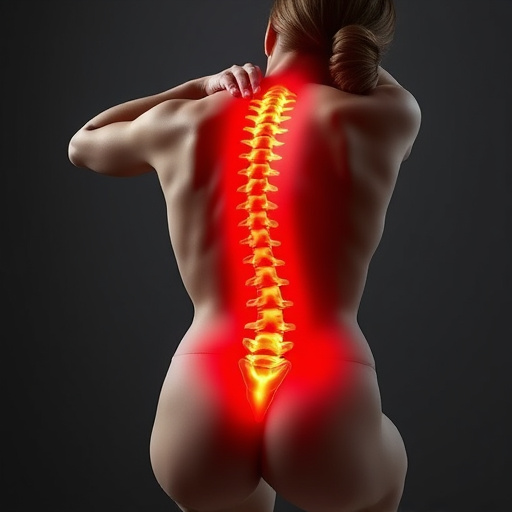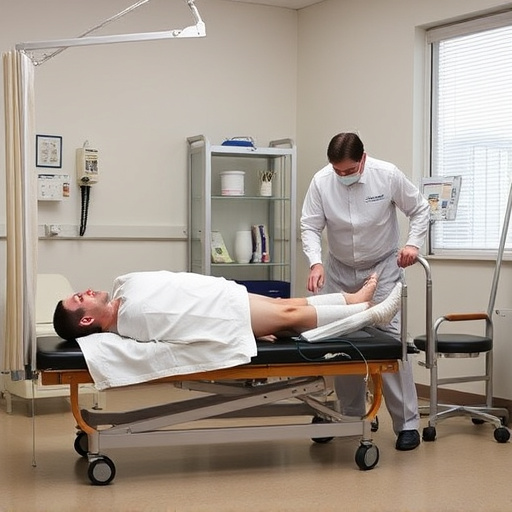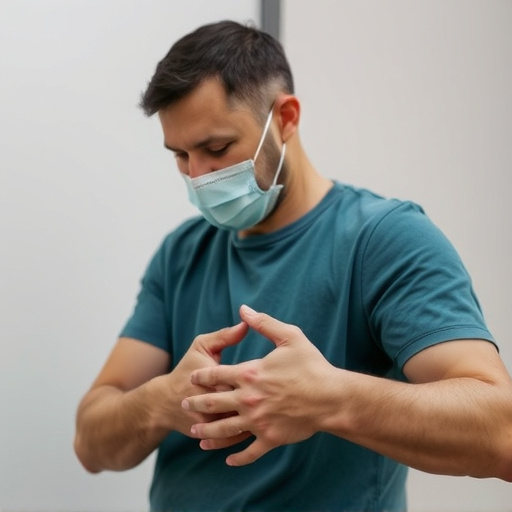Soft tissue shockwave therapy (STST) is a non-invasive treatment using low-energy sound waves to heal soft tissues by stimulating cellular repair and natural healing mechanisms. Effective for muscle recovery issues like lower back pain, it penetrates deep into muscles, tendons, and ligaments to reduce inflammation and chronic pain. Safe, well-tolerated, and encouraging the body's natural anti-inflammatory state, STST is a game-changer in chronic pain management and muscle recovery, offering personalized plans for diverse conditions from musculoskeletal disorders to athletic performance enhancement.
Soft Tissue Shockwave Therapy (STHT) is gaining recognition as a revolutionary non-invasive treatment for various musculoskeletal conditions. This article delves into the world of STHT, exploring its mechanisms in reducing inflammation and its potential benefits. We’ll uncover how this technology works, from its physical principles to biological effects, and highlight its applications across different medical fields. By understanding STHT, we can appreciate its promising role in managing pain and promoting healing.
- Understanding Soft Tissue Shockwave Therapy
- Mechanisms Behind Inflammation Reduction
- Potential Benefits and Applications
Understanding Soft Tissue Shockwave Therapy

Soft Tissue Shockwave Therapy (STST) is a revolutionary non-invasive treatment that utilizes low-energy sound waves to target and heal soft tissues in the body. Unlike traditional therapy methods, STST offers a unique approach by stimulating cellular repair and promoting natural healing processes. This innovative technique has gained popularity in the wellness care industry due to its effectiveness in treating various muscle recovery issues.
By delivering focused shockwaves, STST can penetrate deep into affected areas, such as muscles, tendons, and ligaments, reducing inflammation and pain associated with chronic conditions like lower back pain. The process is safe and often well-tolerated by patients, making it an appealing option for those seeking alternative solutions to conventional treatments. This therapy’s ability to enhance circulation and encourage the body’s natural healing mechanisms makes it a game-changer in muscle recovery and overall wellness.
Mechanisms Behind Inflammation Reduction

Soft tissue shockwave therapy has emerged as a revolutionary approach to inflammation reduction, offering a non-invasive solution for various conditions. This therapeutic technique utilizes low-energy acoustic waves, known as shockwaves, to penetrate deep into the soft tissues of the body. By doing so, it activates multiple physiological pathways that lead to significant anti-inflammatory effects. One of the key mechanisms involves the stimulation of fibroblasts, which are cells responsible for collagen production and tissue repair. This process promotes the release of growth factors, enhancing the body’s natural healing response and reducing inflammation at the site.
Additionally, shockwave therapy disrupts the formation of pain-signaling pathways, providing relief from chronic pain conditions such as neck pain treatment and joint pain relief. The acoustic waves can also modulate the activity of immune cells, like macrophages, which play a central role in inflammatory responses. This modulation helps to shift the balance towards a more anti-inflammatory state, further contributing to the overall reduction of inflammation. As a result, soft tissue shockwave therapy offers a promising alternative for those seeking effective chronic pain management without the side effects often associated with traditional medications.
Potential Benefits and Applications

Soft Tissue Shockwave Therapy offers a promising approach to inflammation reduction and has garnered attention for its potential benefits in various applications. This non-invasive treatment stimulates tissue repair and regeneration by utilizing focused acoustic waves, targeting areas affected by chronic inflammation, muscle strains, or tendinopathies. One of the key advantages is its ability to promote back pain relief and sciatica treatment, making it a game-changer for individuals seeking alternative solutions to conventional therapies.
The versatility of this therapy allows for personalized treatment plans tailored to specific conditions. Whether it’s addressing musculoskeletal disorders, enhancing athletic performance, or improving recovery from injuries, shockwave therapy can be adapted to meet individual needs. By reducing inflammation and supporting tissue healing, this innovative treatment has the potential to revolutionize patient care, offering a natural and effective path towards improved mobility and overall well-being.
Soft tissue shockwave therapy emerges as a promising approach for reducing inflammation, offering potential benefits across various applications. By understanding the mechanisms behind its effectiveness and leveraging its ability to target deep tissues non-invasively, this therapy holds great promise for improving patient outcomes in many areas. As research continues, soft tissue shockwave therapy could revolutionize treatments for chronic inflammation, making it an exciting development in modern medicine.














